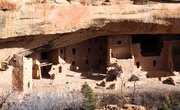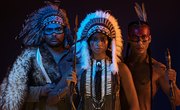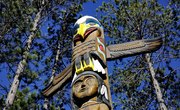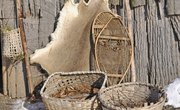"Sioux," like "Iroquois," is a derogatory name conferred on the group by unfriendly neighbors. The word comes from "Nadouwesou," an Ojibway word for little snakes. The Sioux call themselves Lakota, Dakota or Nakota, which all mean "allies," but they also use the word Sioux. The three main tribes -- Teton, Yankton and Santee -- have a rich cultural legacy with seven principal ceremonies that express their reverence for and dependance on Great Spirit.
White Buffalo Calf Woman
A diversity of bands make up the Sioux nation, but they all share a belief in an all-pervading mystery they call Wakan Tanka, or Great Spirit. They display reverence for Wakan Tanka by honoring the four directions, as well as the sun, the moon and all humanity. The Sioux believe that their culture and ceremonies were given to them by a being they call White Buffalo Calf Woman. After teaching these ceremonies, White Buffalo Calf Woman gave the people a sacred pipe, and generation after generation of Sioux have appointed someone to keep it.
The Sweat Lodge
According to Sioux tradition, White Buffalo Calf Woman was a supernatural being who promised to return, and some see the birth of a white buffalo calf in 1994 as a sign of that return. Derived partly from her teachings, and partly from the visions of shamans and wise elders, the Sioux consider seven ceremonies particularly sacred. Among these are the sweat lodge, which is a purification ceremony. In this ceremony, people gather inside a dome covered with hide or canvas. They sit in a circle around a pit in which they place hot rocks. They pour water on the rocks to create steam, and remain for an extended period singing and praying together.
The Sun Dance
Some believe that the Sun Dance Ceremony came from White Buffalo Calf Woman, while others believe it originated with other Plains tribes. Either way, the Sioux consider it one of their most sacred ceremonies, in which they reaffirm their connectedness with “mitakuye oyasin," or "all my relations." It is a sacrificial ceremony; those who partake do so because of a dream or vision, and for the greater good of the people. In the ceremony, which can last for a week, participants are connected to a pole by a rope attached to pegs pierced through their flesh. They dance back and forth until, with the encouragement of the onlookers, they are able to break free.
Rites of Passage and a Healing Ceremony
Other sacred ceremonies include a vision-seeking quest, which marks the passage of boyhood into manhood, and the hunka or adoption ceremony, in which an older man takes a younger man under his protection. The female coming-of-age ceremony, which isn't practiced much today because of changing gender expectations, was the Buffalo Sing. Young women were isolated at first menses, their hair was braided and the part was colored red, and they were taught by elder women. A spirit-keeping ceremony is conducted for a deceased member of the tribe one year after his or her death. The passing-the-ball ceremony is a healing ritual for the tribe. As the ball is passed from person to person, the participants emphatically remind each other that everyone is related.
Related Articles
References
Writer Bio
Chris Deziel has a bachelor's degree in physics and a master's degree in humanities. Besides having an abiding interest in popular science, Deziel has been active in the building and home design trades since 1975. As a landscape builder, he helped establish two gardening companies.











